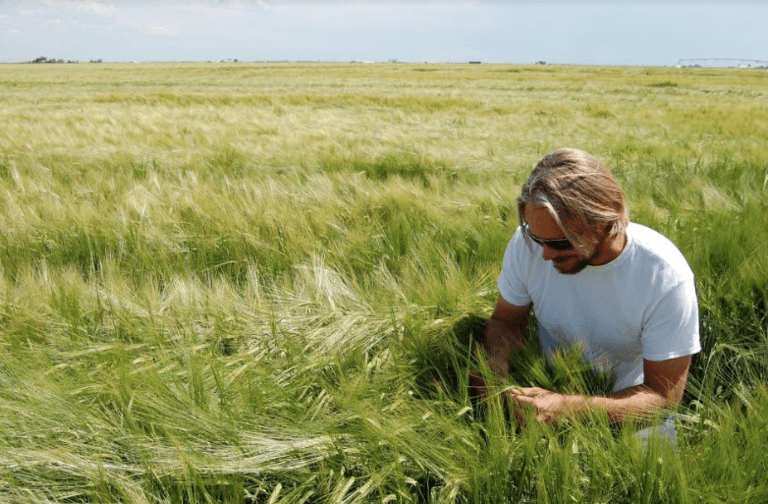
Molson Coors recently issued its annual corporate responsibility report. The brewing giant, which boasts venerable beer brands such as Blue Moon, Miller, and of course, Coors and Molson Canadian, says its long-term targets rest on three pillars: the promotion of responsible consumption; having a brewing process as efficient as possible from grain to glass; and supporting people and the communities in which they live and work.
Part of this strategy includes what Molson Coors says its decision this month to join the group of 430 companies worldwide that are committed to science-based targets. The company says its 2025 goals seek to reduce its carbon emissions by 50 percent within its own operations and by 20 percent across its entire value chain. In halving its carbon emissions throughout the company’s operations, Molson Coors says it strives to decrease its energy consumption, is working on purchasing all of its electricity needs from renewables, seeks CO2 self-sufficiency at all of its sites, and continues to assess options for cleaner and more sustainable fuels.
“Our efforts have already helped us make great strides toward our ambitions,” said a Molson Coors representative in an emailed statement to Triple Pundit. “In 2017, we reduced absolute carbon emission from our direct operations by 15 percent, and achieved an absolute carbon emissions reduction of 6.2 percent across our value chain.”
According to Molson Coors, the largest challenge to reaching these science-based targets is the same one faced by every industry that embarks upon such a plan: influencing change across the organization. Empowering these employees is one way in which the company says its determined to meet such goals over the next seven years. For example, Molson Coors recently rolled out an energy management software platform that provides greater accountability and visibility of energy use across its various locations. The platform offers employees tools to act with more autonomy to solve problems along with the agility to harness any new opportunities to conserve energy.
Conserving water is also high on the brewer’s priority list. The company has long worked on reducing that pesky water-to-beer ratio across its operations. Molson Coors says it is well aware that its operations include a large presence in water-stressed states, including California, Texas and Colorado. During 2017, the company said it had restored approximately 460 million gallons of water to various watersheds in those states.
When it comes to the company’s sustainability performance, one of the areas Molson Coors insists it has had significant impact is within its agricultural supply chain. According to Kim Marotta, the company’s global senior director of corporate responsibility, Molson Coors’ work with barley farmers in particular stands out. Nearly a decade ago, the company started with one barley farmer, John Stevenson, and one farm. Marotta explained how Stevenson and his family sought positive change, and that he was willing to take risks while implementing more sustainable farming practices. From there, this once-nascent pilot program expanded to ten farms, then eventually fifty farms - and now, to nearly all of the company’s barley growers in the U.S.
Currently, Molson Coors says it works with approximately 860 growers as part of the company’s Grower Direct program. These farmers supply up to 80 percent of all the barley it purchases. Farmers can access what Molson Coors calls its Grower Direct Portal, a digital platform that collects data from agricultural best management practices at the field level. This portal allows the company to track its barley growers’ sustainability efforts – and last year, the company said it achieved 100 percent participation by its barley farmers.
On another participation front: like brewing companies, Molson Coors has been open about ensuring that its products are safely consumed. But the company insists that its role is broader than merely “promoting responsible consumption.” Molson Coors says it works with governments worldwide to establish a legal drinking age, set what the company views as reasonable excise taxes, and ensure the enforcement of illegal blood alcohol limits. The company also has programs with retailers to make sure that these stores restrict sales to minors while educating consumers about viable alternatives to return home safely after a night of imbibing. Molson Coors claims that these efforts are helping to reduce harmful alcohol use and promote responsible consumption.
“The one thing that makes me the most proud is the people - from our leadership team, to our employees and to our farmers in the fields,” Marotta told 3p. “We are a collective group of passionate people who desire to make the communities and the places where we work better places to live.”
Image credit: Molson Coors

Leon Kaye has written for 3p since 2010 and become executive editor in 2018. His previous work includes writing for the Guardian as well as other online and print publications. In addition, he's worked in sales executive roles within technology and financial research companies, as well as for a public relations firm, for which he consulted with one of the globe’s leading sustainability initiatives. Currently living in Central California, he’s traveled to 70-plus countries and has lived and worked in South Korea, the United Arab Emirates and Uruguay.
Leon’s an alum of Fresno State, the University of Maryland, Baltimore County and the University of Southern California's Marshall Business School. He enjoys traveling abroad as well as exploring California’s Central Coast and the Sierra Nevadas.














